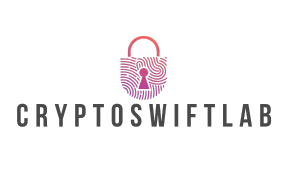Table of Contents
ToggleIn a world where software rules the roost, Software as a Service (SaaS) is the king of the castle. It’s not just a trend; it’s a revolution that’s flipping the tech industry on its head. Forget the days of clunky installations and endless updates—SaaS delivers powerful solutions at lightning speed, all while keeping costs in check. Who wouldn’t want to trade in their old software dinosaur for a sleek, cloud-based solution that works like magic?
Understanding SaaS Disruptive Innovation
SaaS constitutes a significant shift in how businesses utilize technology. It offers effortless access to software applications over the internet, which minimizes the need for on-premises installations.
Definition of SaaS
Software as a Service (SaaS) delivers software applications via the cloud. Users access these applications through web browsers without needing local installations. Businesses value SaaS for its subscription-based model, which allows them to pay only for what they use. Scalability emerges as a core advantage, enabling organizations to adjust their usage based on needs. SaaS applications include various services, such as customer relationship management (CRM), project management tools, and communication platforms. This flexibility benefits firms of all sizes, enhancing operational efficiency and reducing overhead costs.
Definition of Disruptive Innovation
Disruptive innovation refers to a process that transforms industries or creates entirely new markets. Established players often struggle to respond effectively to these innovations due to their focus on existing customer needs. New entrants typically leverage technology to introduce simpler, more affordable solutions that appeal to overlooked segments. For example, companies offering subscription-based software often disrupt traditional software vendors reliant on large upfront costs. The result is increased accessibility for users and accelerated adoption of new technologies. Understanding this dynamic illustrates how SaaS represents a disruptive force reshaping the tech landscape.
Impact of SaaS Disruptive Innovation

SaaS disrupts traditional practices in technology deployment and software utilization. This disruption reshapes business landscapes by influencing various models and strategies.
Changes in Traditional Business Models
Traditional business models undergo significant transformations due to SaaS implementation. Companies shift from upfront licensing fees to subscription models, facilitating predictable cash flow. These subscription services enable ongoing revenue streams while reducing barriers for entry. Organizations can scale offerings without extensive infrastructure investments, improving adaptability as market demands shift. Freelancers, small businesses, and large enterprises alike benefit from reduced risks associated with on-premises software, allowing them to focus on core functions instead of maintenance.
Benefits for Startups and Enterprises
Startups find SaaS advantageous for rapid deployment and lower initial costs. With minimal upfront investment, new ventures access advanced technologies that would otherwise be prohibitive. Enterprises experience similar benefits, leveraging SaaS to enhance operational efficiencies across departments. Collaboration tools, customer relationship management, and analytics platforms optimize internal processes. By utilizing SaaS, businesses streamline workflows and focus on innovation, enabling them to respond quickly to market changes and customer needs.
Key Examples of SaaS Disruptive Innovation
Numerous companies exemplify the power of SaaS as a disruptive innovation. These case studies illustrate how SaaS transforms traditional industry practices.
Case Study: Salesforce
Salesforce revolutionized customer relationship management (CRM) with its cloud-based platform. Accessible from any device with internet connectivity, it allows businesses to manage interactions with customers seamlessly. The subscription model eliminates heavy upfront costs, enabling small and medium enterprises to utilize advanced CRM tools. By simplifying integration and enhancing collaboration among teams, Salesforce empowers organizations to gain valuable insights into customer behavior and sales trends. It continues to redefine how companies handle customer relationships, demonstrating the core principles of SaaS innovation.
Case Study: Zoom
Zoom transformed video conferencing through its user-friendly platform. Offering high-quality video and audio solutions, it facilitates communication for businesses worldwide. By removing complex installation processes, users can set up meetings in mere seconds. The freemium model encourages widespread adoption, allowing individuals and organizations to experience essential features without financial commitment. Zoom’s rapid growth during the pandemic highlighted the demand for effective remote communication tools and showcased how SaaS can adapt and respond to changing market needs. This case exemplifies the capacity of SaaS to shape business practices by enhancing connectivity and collaboration.
Challenges of SaaS Disruptive Innovation
SaaS disruptive innovation faces several challenges that can hinder its widespread adoption and success. Addressing these obstacles is crucial for both providers and users.
Security Concerns
Security concerns rank high among the challenges facing SaaS. Providers store sensitive data on cloud servers, making it vulnerable to breaches or unauthorized access. Users often worry about compliance with regulations like GDPR or HIPAA, especially in industries that handle confidential information. Ensuring data encryption and robust authentication measures is essential for building trust. Providers also need to regularly update their security protocols to stay ahead of potential threats. Implementing multi-factor authentication can enhance security, but effectiveness depends on user engagement with these technologies.
Market Saturation
Market saturation poses a significant challenge in the SaaS landscape. Numerous companies offer similar solutions, making it difficult for new entrants to distinguish themselves. Differentiation becomes crucial for both startups and established players as they strive for market share. Competing on price alone can lead to unsustainable business models, while innovation drives customer interest and retention. Organizations must continuously adapt their offerings to meet evolving customer needs. Effective marketing strategies help create a unique brand proposition, while focusing on niche markets can enhance visibility and reduce competition pressures.
Future Trends in SaaS Disruptive Innovation
SaaS continues to evolve, driven by advancements in technology and changing market dynamics. Emerging technologies such as artificial intelligence and machine learning play a key role in enhancing SaaS offerings by providing data-driven insights and automation capabilities.
Emerging Technologies
Cloud computing, paired with AI, allows for smarter service delivery and personalized user experiences. Integration of machine learning algorithms enables predictive analytics, helping businesses anticipate customer behavior effectively. Blockchain technology enhances data security and transparency, addressing critical concerns regarding data privacy. IoT connectivity further expands the capabilities of SaaS applications, enabling real-time data collection and analysis for informed decision-making. Over the next few years, these technologies will redefine how SaaS solutions operate, promoting efficiency and innovation.
Predictions for Industry Growth
Projections indicate that the global SaaS market could surpass $300 billion by 2025, reflecting a strong adoption trajectory. Increasing demand for remote work solutions fuels this growth, as more companies recognize the benefits of cloud access. Additionally, small to medium-sized enterprises are shifting toward subscription-based models, enabling them to compete with larger firms. Companies investing in user experience and advanced features are likely to thrive. More organizations will prioritize flexible solutions, cementing SaaS’s position as a cornerstone of modern business operations.
SaaS disruptive innovation is undeniably reshaping the tech landscape. By providing accessible and cost-effective solutions, it enables businesses to adapt rapidly to changing market demands. The shift to subscription models not only lowers entry barriers but also fosters a culture of continuous improvement and innovation.
As organizations increasingly rely on SaaS for operational efficiency, the need for robust security measures and differentiation becomes paramount. Companies that embrace emerging technologies like AI and machine learning are well-positioned to enhance user experiences and maintain a competitive edge.
With the SaaS market projected to grow significantly in the coming years, its role as a driving force in modern business operations is set to expand. Embracing this evolution will be crucial for businesses aiming to thrive in an ever-changing digital environment.







